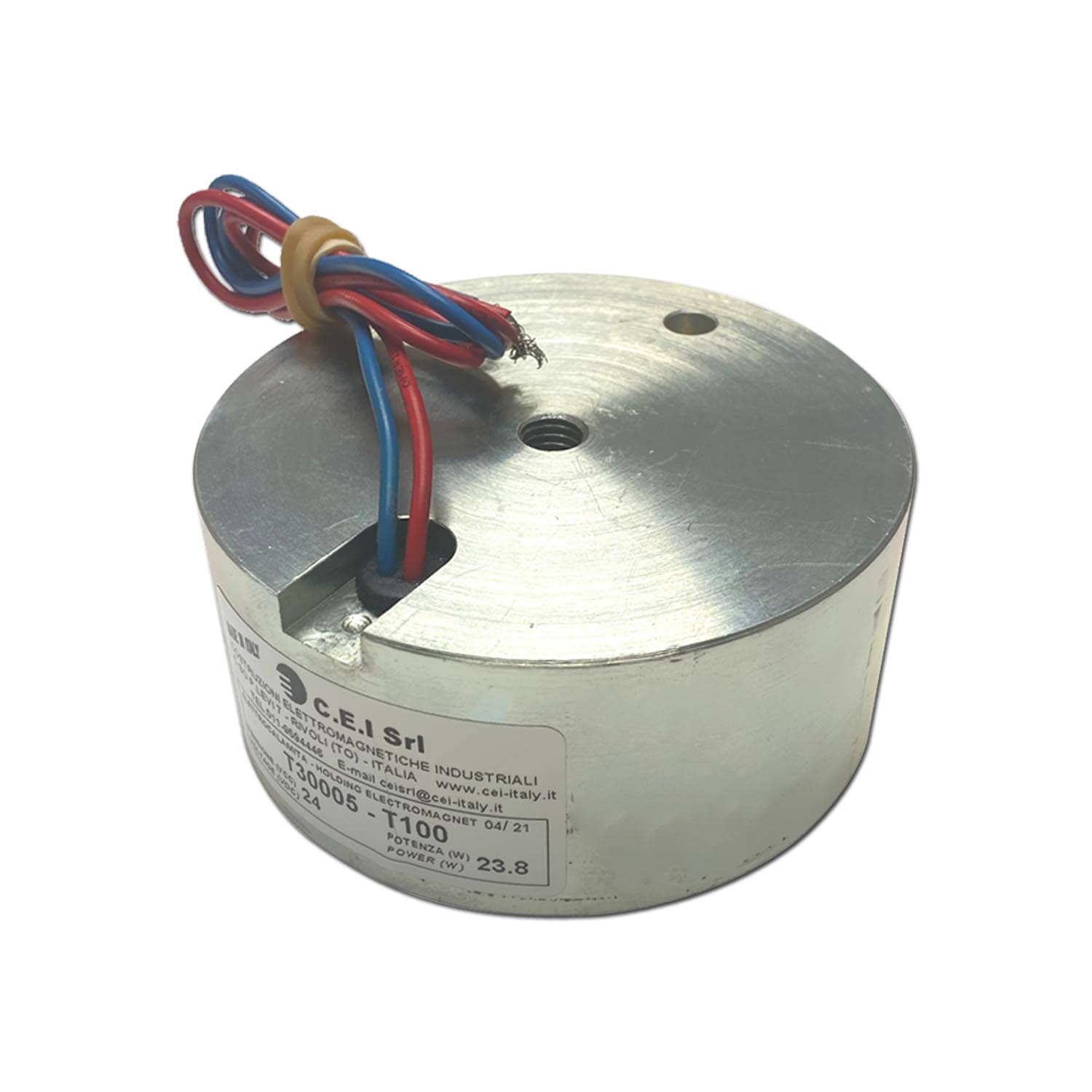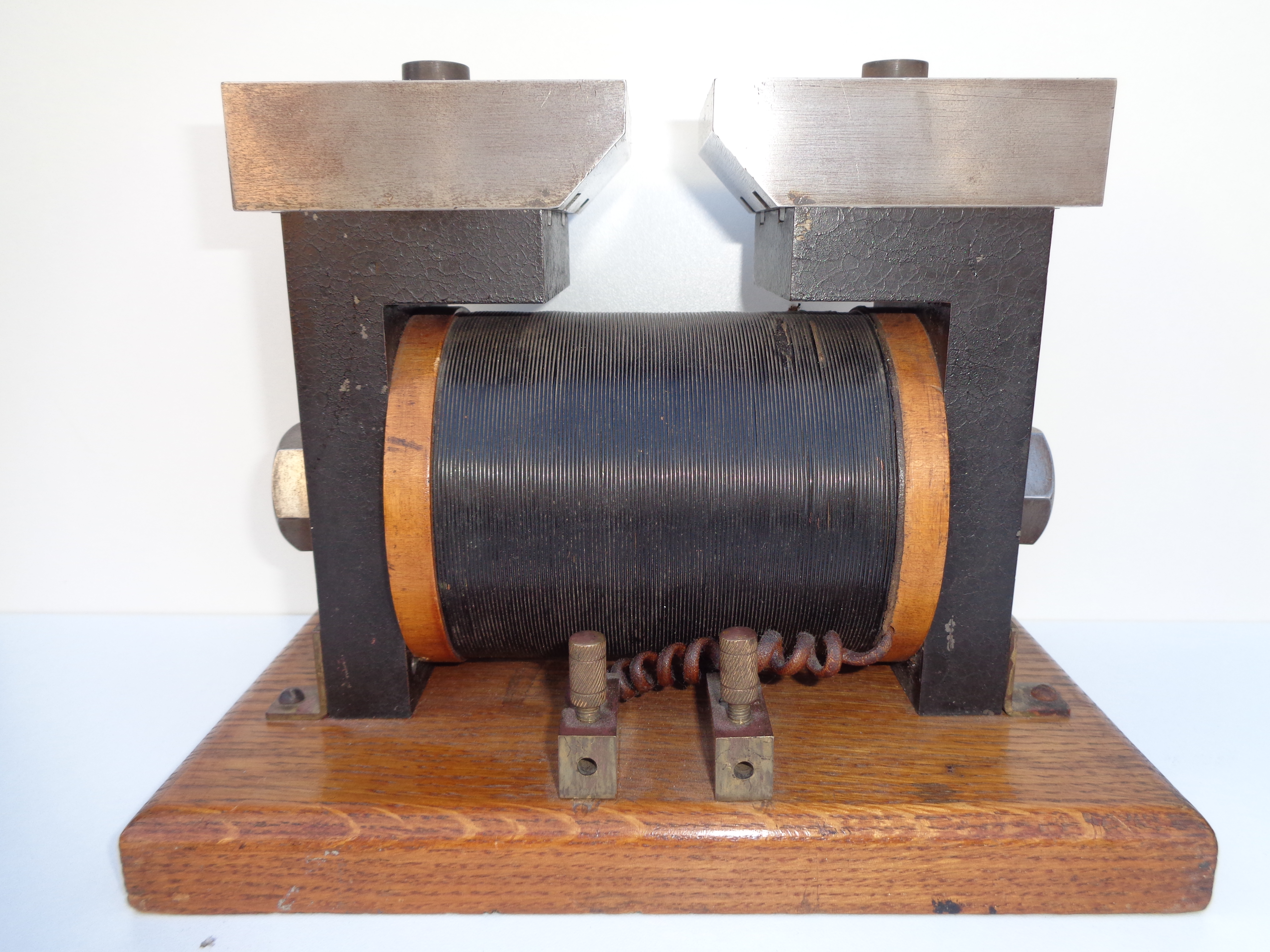

Computing the magnetic field and force exerted by ferromagnetic materials is difficult for two reasons. Another equation used, that gives the magnetic field due to each small segment of current, is the Biot–Savart law. An approximation for the force F is F = C A n I / l around any closed loop is equal to the sum of the current flowing through the loop. The maximum uniform pull happens when one end of the plunger is at the middle of the solenoid.

For example, the forces are balanced when the plunger is centered in the solenoid. The plunger stops moving when the forces upon it are balanced. Applying a current to the solenoid applies a force to the plunger and may make it move. The solenoid is a coil of wire, and the plunger is made of a material such as soft iron. The magnetic domain theory of how ferromagnetic cores work was first proposed in 1906 by French physicist Pierre-Ernest Weiss, and the detailed modern quantum mechanical theory of ferromagnetism was worked out in the 1920s by Werner Heisenberg, Lev Landau, Felix Bloch and others.Ī common tractive electromagnet is a uniformly-wound solenoid and plunger. The first major use for electromagnets was in telegraph sounders. By using wire insulated by silk thread, and inspired by Schweigger's use of multiple turns of wire to make a galvanometer, he was able to wind multiple layers of wire on cores, creating powerful magnets with thousands of turns of wire, including one that could support 2,063 lb (936 kg). However, Sturgeon's magnets were weak because the uninsulated wire he used could only be wrapped in a single spaced out layer around the core, limiting the number of turns.īeginning in 1830, US scientist Joseph Henry systematically improved and popularised the electromagnet. Sturgeon displayed its power by showing that although it only weighed seven ounces (roughly 200 grams), it could lift nine pounds (roughly 4 kilos) when the current of a single-cell power supply was applied. When a current was passed through the coil, the iron became magnetized and attracted other pieces of iron when the current was stopped, it lost magnetization. The iron was varnished to insulate it from the windings.

His first electromagnet was a horseshoe-shaped piece of iron that was wrapped with about 18 turns of bare copper wire ( insulated wire didn't then exist). British scientist William Sturgeon invented the electromagnet in 1824.

ĭanish scientist Hans Christian Ørsted discovered in 1820 that electric currents create magnetic fields. Electromagnets are also employed in industry for picking up and moving heavy iron objects such as scrap iron and steel. However, unlike a permanent magnet that needs no power, an electromagnet requires a continuous supply of current to maintain the magnetic field.Įlectromagnets are widely used as components of other electrical devices, such as motors, generators, electromechanical solenoids, relays, loudspeakers, hard disks, MRI machines, scientific instruments, and magnetic separation equipment. The main advantage of an electromagnet over a permanent magnet is that the magnetic field can be quickly changed by controlling the amount of electric current in the winding. The wire turns are often wound around a magnetic core made from a ferromagnetic or ferrimagnetic material such as iron the magnetic core concentrates the magnetic flux and makes a more powerful magnet. The magnetic field disappears when the current is turned off. A current through the wire creates a magnetic field which is concentrated in the hole, denoting the center of the coil. Electromagnets usually consist of wire wound into a coil. The crosses are wires in which current is moving into the page the dots are wires in which current is moving up out of the page.Īn electromagnet is a type of magnet in which the magnetic field is produced by an electric current. This drawing shows a cross section through the center of the coil. Magnetic field produced by a solenoid (coil of wire).


 0 kommentar(er)
0 kommentar(er)
